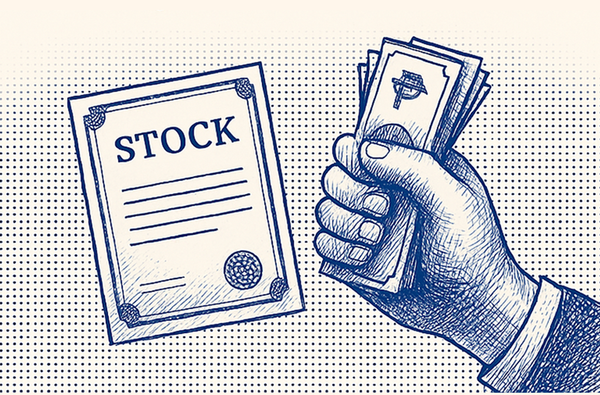How to Make Better Investment Decisions With The "Triangulation Principle"
A health check-up inspects multiple body parts so that you can have a full understanding of how you're doing. Following the Triangulation Principle will help you do the same for your investments.

Why is your phone's GPS so precise?
If you've ever used Google Maps, Waze, and other similar apps, you'll notice that the GPS can track your location down to a couple of meters.
How do they do it? Through a process called "trilateration", which is often confused with the very similar process of "triangulation".
GPS satellites orbiting the Earth communicate with your phone. These signals reveal your phone's distance from each satellite.
Using only 1 satellite would make the system error-prone. However, because there are multiple satellites being used to identify your phone's location, the data sources can be cross-checked and compared. This prevents errors and increases precision.
The Triangulation Principle of Investing
There is a principle similar to trilateration that you can apply to your investments. I like to call it the "Triangulation Principle":
The Triangulation Principle:
The more tools you use for analyzing an investment, the better your understanding of its possible outcomes.
Valuing investments is not about having a single precise measurement. It's about knowing the gradient of possibilities, then positioning yourself in a way that will likely be profitable.
Applying the Triangulation Principle
How do you use the Triangulation Principle? Here are some ideas.
You can use multiple valuation techniques that focus on different parts of the company.
Some valuation techniques focus on the balance sheet. Others focus on growth and profitability. There are techniques that use inter-company comparisons. There are even those that try to judge a company based on its dividend.
Here are some articles teaching some valuation techniques:
- How to Value Your First Stock In 1 Hour or Less – No Finance Knowledge Required!
- A Simple Valuation Technique From a Superinvestor Who Beat Warren Buffett’s Track Record
By using different techniques, you'll be able to see your target company from different angles, revealing its strengths and weaknesses.
You can consider multiple scenarios for each investment.
When considering investments, it's easy to just stick to one story, such as "This company will go up!" or "This company will crash!".
To get a better understanding of potential risks and rewards, you have to think about other possibilities - especially those you disagree with.
Always try to argue the opposite of your opinion. If you love a company, what would kill it? If you hate a company, what could save it?
By thinking through the full spectrum of possibilities, the Triangulation Principle will help you find hidden opportunities.
You can add variety to your information sources.
Lastly, you can gain a better understanding of your investments by using a variety of information sources.
One of the best and easiest places to get information on companies is through their annual reports. However, you can also use alternative resources to get a deeper understanding.
Why not try industry journals, market research reports, interviews with employees and vendors, or even reading the annual reports of their competition?
By utilizing different sources of information, you'll increase your ability to judge the pros and cons of your investments.
Conclusion
A health check-up inspects multiple body parts so that you can have a full understanding of how you're doing. Following the Triangulation Principle will help you do the same for your investments.
By constantly testing your assumptions, asking "What if?", and exploring alternative possibilities, you can improve your ability to sift through opportunities and find the best investments for you.



